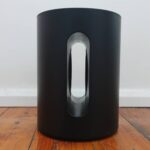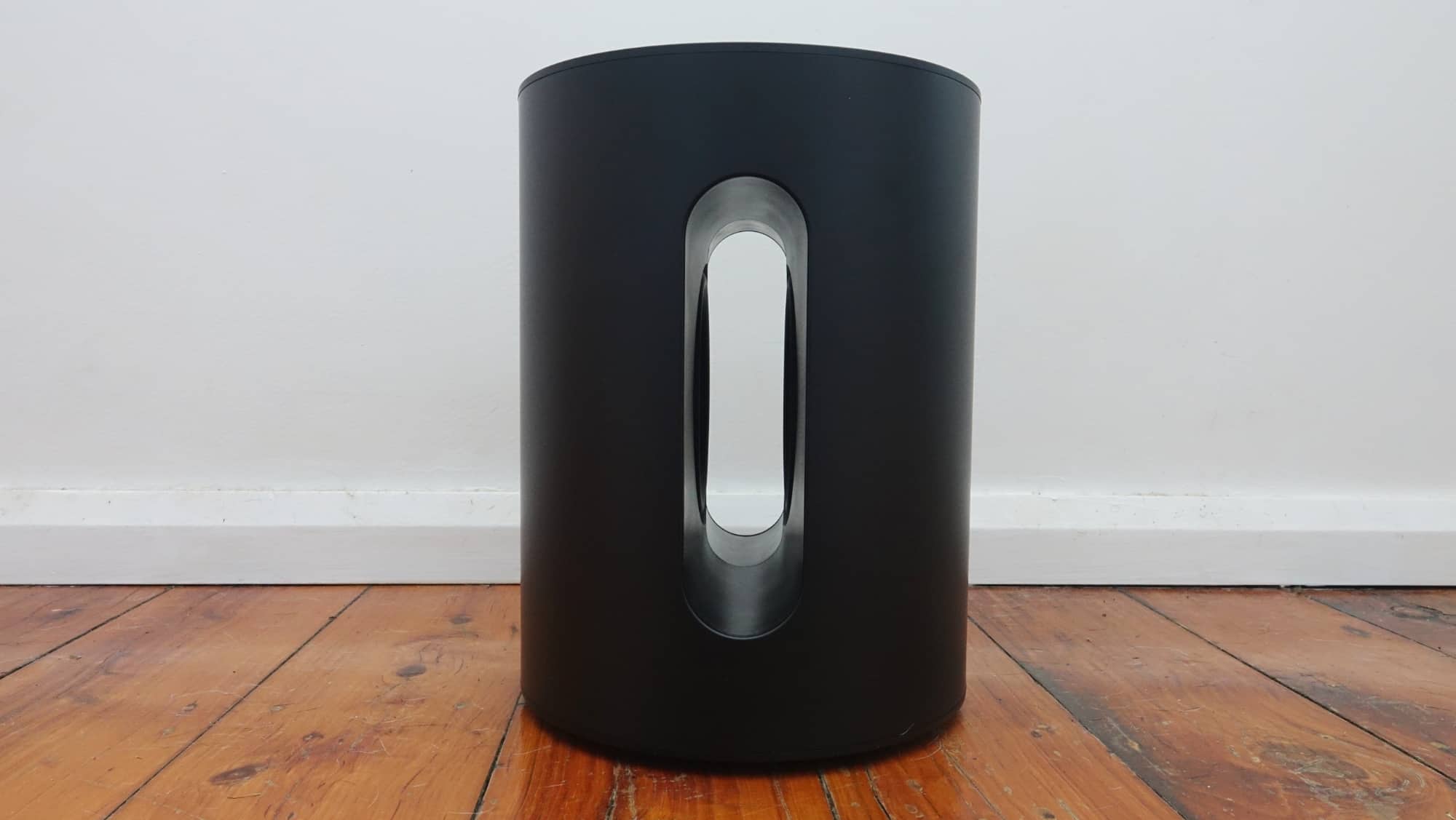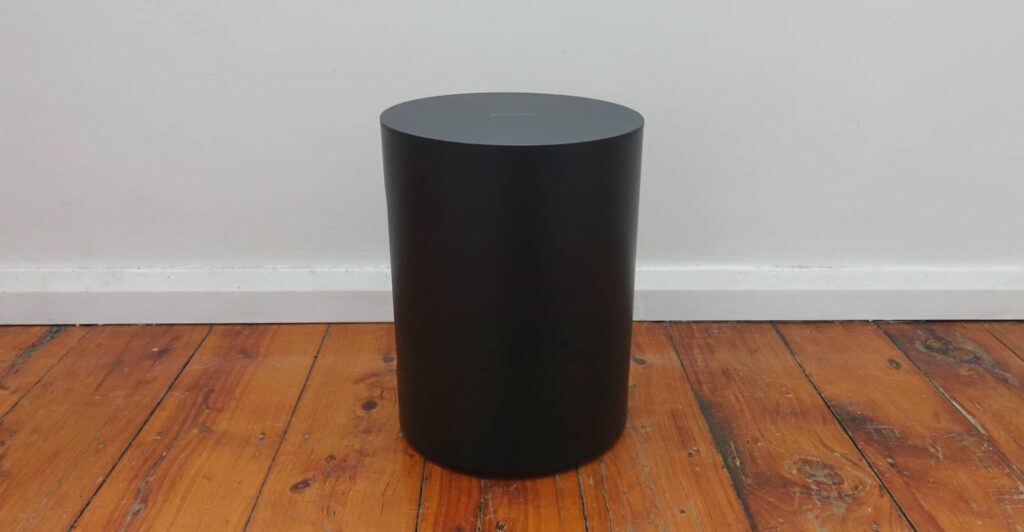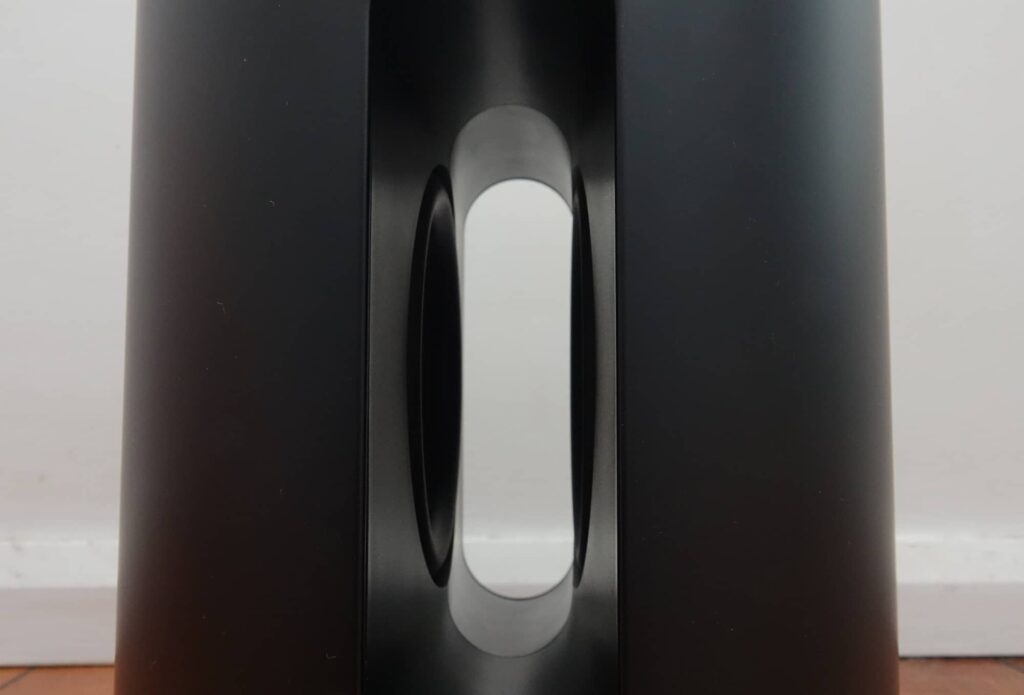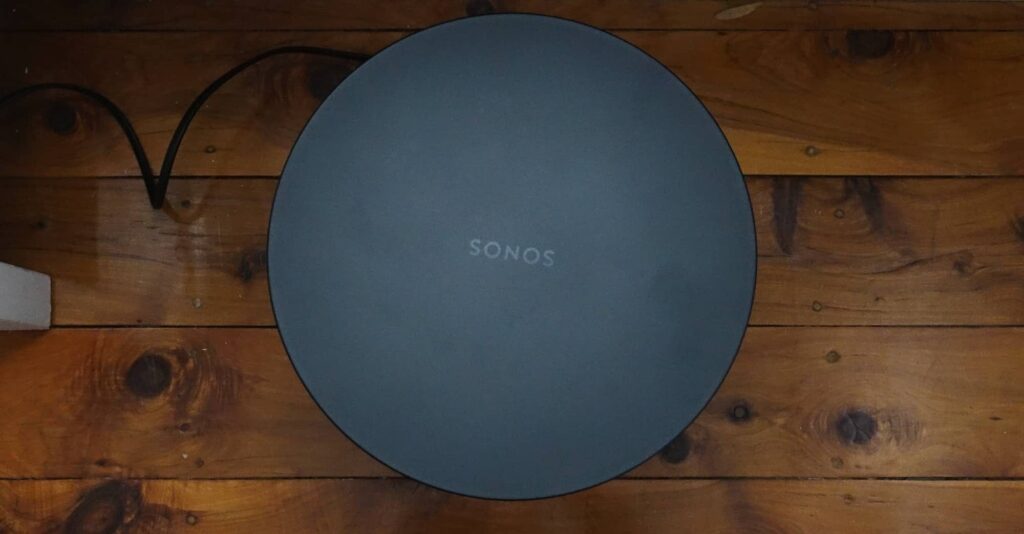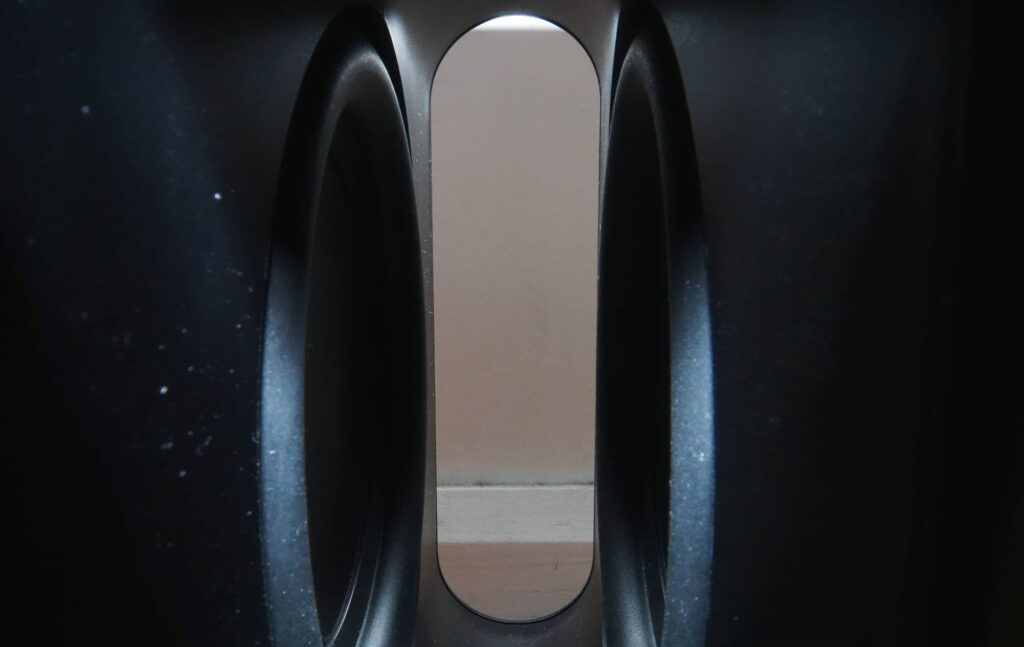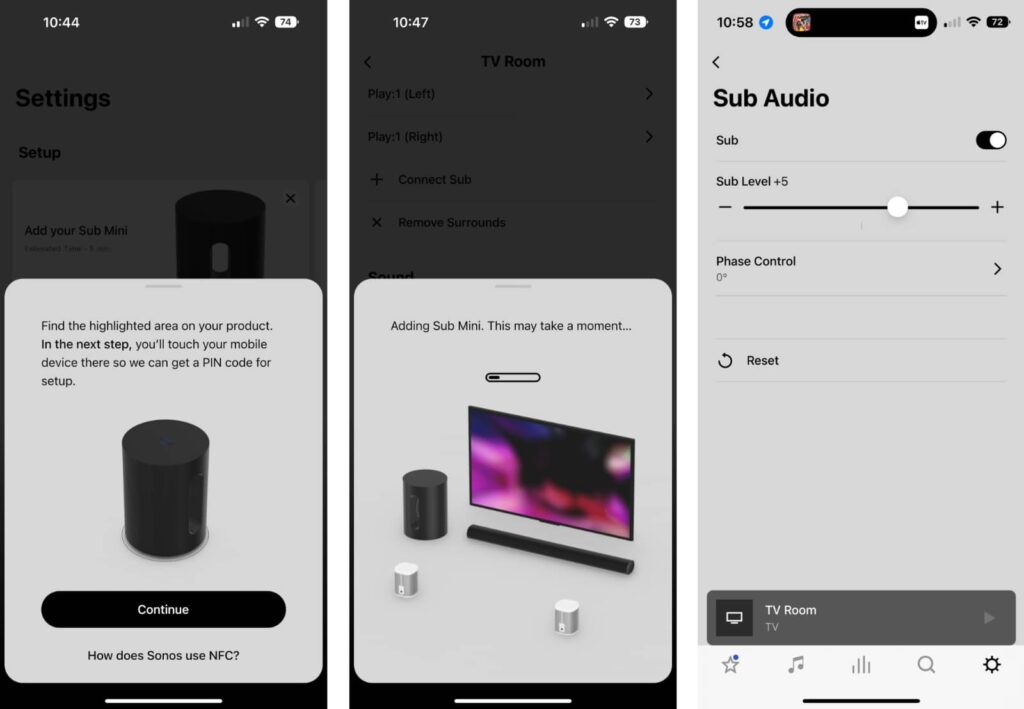Quick review
The good
The not-so-good
Sonos soundbars already offer a decent spot of bass, but if you need more, you may need to spend up. And that’s where the Sub Mini comes in, offering bass for a little less.
As manufacturers work out how to get great sound in a compact form, we’re beginning to see some devices needed less and less. Great headphones capable of a big sound don’t need to be massive, and the same is true of speakers.
In fact, we’ve seen some stunning efforts in speaker design that allow excellent highs and lows to be fitted into smaller sizes, moving air differently compared to the huge cabinets that would have once been required.
But even with these developments, sometimes you just want a little more to work with. That’s typically true with bass, because while you can be surprised by the amount of bass able to found in a one-piece soundbar, you still might want some floor-shaking good times on offer from an external subwoofer.
If that’s you and you have a Sonos, there’s only been one choice for a good long time. Priced at the thousand dollar mark (and just above it these days), the Sonos Sub was the only choice if you wanted to boost the low range of your Sonos system accordingly. You couldn’t just throw in any sub; it had to be a Sonos Sub, and there was just that one.
Things are changing, though, and with the release of the Sub Mini, Sonos has a less expensive take on its optional bass booster. Is it worth the $699 asking price?
What is the Sonos Sub Mini?
Some things are all in the name, and with the Sonos Sub Mini, that is definitely the case. The second of the Sonos subwoofers, the Sub Mini is a smaller take on the concept, complete with an inside design similar to its sibling, even if the exterior is different.
Whereas the original Sub is a glossy flattened square of a thing that weighs 16 kilograms and has more than a solid heft when you pick it up, the Sub Mini a more of a cylinder in matt plastic the likes of which is similar to what you can find in the Sonos Roam or Sonos Move. While it lacks the classy elegance of its shinier and heavier sibling, it does shed a lot of the weight, dropping 10kg down to 6 kilograms.
Inside, you’ll find two Class D digital amps connecting to two 6 inch force-cancelling woofers that squeeze the airflow going through the subwoofer, keeping distortion down as the bassy boom is generated. That airflow design is clearly taking a page right out of the regular Sub, even if the physical design of the speaker has not, with the Sub Mini looking more like a bigger version of the Sonos Move and less like any other subwoofer Sonos has made previously.
It’s still a lot like its other subwoofer, with both a figure-eight power port, Ethernet plug port for wired networks, and a wireless connection built inside the subwoofer, as well, giving you the option of connecting it to your home sound system however you want.
What does it do?
To that end, the focus is still the same: deliver bass for whatever you need.
Movies will get more bottom end, and music can do it, too. If you have an Atmos-capable Sonos soundbar such as the Arc or the Beam, you’ll find more bass is added to your 3D sound experience, and then to stereo when 3D isn’t available. Meanwhile, the remainder of the Sonos models will just see this as a subwoofer for the awesomeness that is standard stereo.
We probably don’t need to tell you what a subwoofer does, either. Gadgets like this are the thump, the buzz, the grunt, and the boom.
The Sonos Sub Mini is built for that, using its two Class D digital amps with two 6 inch woofers facing each other for a force-cancelling effect, sitting inside of a bucket cabinet design made from a similar material to what Sonos used on the Move. That’s a similar size to the 6.2 inch woofers in the Sub Gen 3, but a different material and size for the subwoofers themselves, with the more expensive Sub Gen 3 getting a piano black design that looks more premium, and also weighs a whole lot more, too.
Is the Sub Mini for music or movies?
At six kilograms versus the original’s 16kg, the Sonos Sub Mini isn’t quite its brother, even if it comes with a similar name and identical purpose. That might make you think it has fewer purposes, but no, that’s not true at all.
Much like how any Sonos speaker can be used for any type of sound, the Sub Mini can be used for movies and music and podcasts and talk. It’s still a subwoofer, so it’s really catering to the low-end sounds only, but it can handle the bottom end of pretty much anything you throw at it.
Does the Sub Mini do the job?
In terms of adding a bit more structure and depth to the Sonos you might have in your home, the Sub Mini is a thumping success, boosting the bass without beating you over the head too much.
The Sub is big both physically and on the dent it can make to your wallet. In comparison, the Sub Mini delivers a decent amount of bass for small rooms while saving you a good $400, which is enough to let you splurge on something else, maybe a couple of rear speakers if you wanted.
Testing the Sonos Sub Mini against the standard Sub, and Sonos is right: the regular Sub can deliver much more bass, which may be more important if you love yourself a meatier sound or you happen to have a much larger room. It’s no wonder why Sonos pitches the Sub Mini for use with smaller soundbars, or even smaller rooms.
Pickr’s testing room was adequately sized, and works very well with the Arc, one of our favourite soundbars, which the Sub Mini bolsters the bass of quite nicely. By comparison, the regular Sub flexes the bass with much more to work with, though we’re not sure all listeners would even know.
Throughout movie tests, we were treated with more earthy grumble than without, the explosions from the likes of Star Wars appearing more obvious than before when no sub was attached, while music delivered a greater punch. We played with both stereo sound and music in Dolby Atmos, and while the latter offered a beautiful bottom end in supported music, stereo still delivered, too.
The Pickr Sound Test wasn’t quite its usual flexible self, thanks in part to this speaker being used for only one part of the sound spectrum — bass — but we could still pick up sub-bass in tracks, with more oomph across the entire playlist.
You can also choose to leave the Sub Mini delivering at its default setting, or even use Sonos’ True Play to adapt the subwoofer to your room. We opted for tweaking the bass accordingly, as that would let us play with how much bass was too much, especially in comparison to the original model.
In our tests, we found a bass setting of +5 was plenty on the Sub Mini, which in turn was equal to around +3 on the regular Sub.
Does that mean the Sub Mini gives you a little less to work with and makes the subwoofer work a little harder to deliver? Maybe, but unless you’re all about shaking the floorboards from their position and giving your home a virtual quake, you’re not likely to care.
Frankly, there’s enough bass here to make your baby poop, as we learned when the Sub Mini was being tested at +10, and our Bub decided to let one loose. While not the typical metric for testing a subwoofer, we’d call that a success.
Is the Sub Mini worth your money?
That success manages to bring the bass at a slight cost reduction, fetching $699 for the Sub Mini compared to the $1099 price of the regular Sub.
And while we like the price — because saving money is always nice — we can’t help but feel it should be a little more compelling.
At $1099, the Sonos Sub is less than the $1499 Sonos Arc soundbar, and bolsters the bass of that already solid speaker system. Seriously, the bass the Arc delivers without the Sub is quite impressive already, and adding it just allows you to flex the punch that much more, driving explosions and bassy beats with more wallop.
In comparison, the Sub Mini is pitched at lower priced soundbars, including the $399 Ray and $699 Beam Gen 2. It will work with any soundbar, including the former Playbase, Beam Gen 1, and even a Playbar if you still have one, but besides the Arc, the current Sonos soundbar line-up is all pitched either lower priced or equal to the Sub Mini, and that makes it feel a touch overkill in price. At $499 or $549, the argument would be easier, we’d say.
The Sub Mini also doesn’t quite have the material design of its sibling, and is much easier to accidentally scratch. The bucket design mightn’t suit all home theatres, either, especially given it has to be standing up, distinct from how the Sub Gen 3 can lie flat.
It also lacks flexibility of its sibling, with Sonos capping the multiple sub usage in this one, while leaving it a little more open in the regular Sub. Grab two Sub gen 3 models and you can pair them together for a dot two setup; use the Arc, two rear speakers, and two Sub models, and you’ll have 5.2.2 sound, equating to five surround, two sub, and two 3D.
Unfortunately, the Sub Mini can’t do that, as Sonos caps the subwoofer usage here to one. Grab a Sub Mini and you can only have the one subwoofer matched to one speaker system, which is likely the norm for most people, but just lacks that extra bit of flexibility.
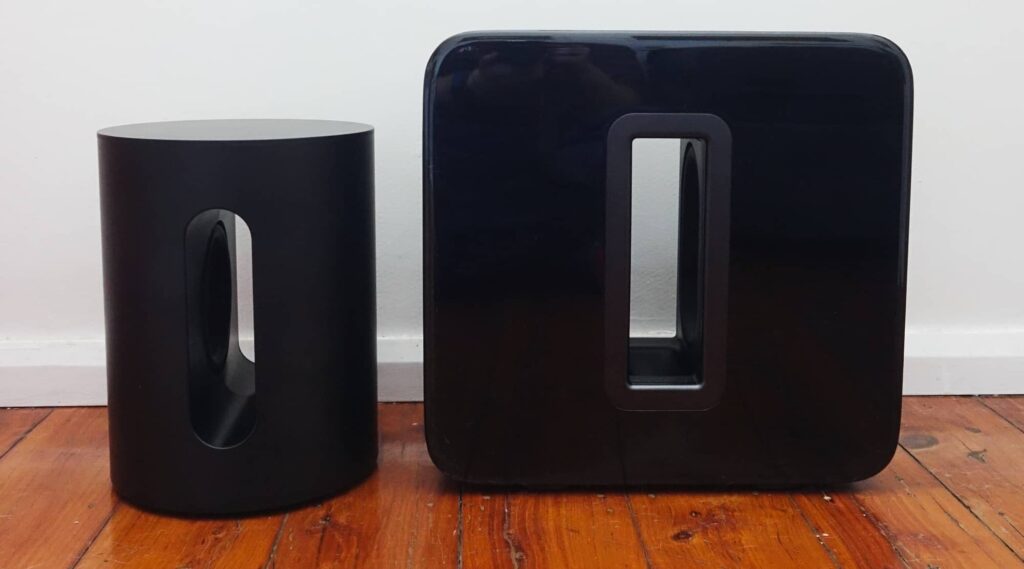
Yay or nay?
Even without the extended flexibility, there are reasons to cheer for what Sonos has here. Namely in what you save.
While we wish it was a more rounded five hundred dollars, the $400 you save between this and the Sub Gen 3 will make a lot of sense to customers eager to boost their bass without emptying their wallet.
Provided you have the spot in your room for it, the sub sound on offer in the Sub Mini is a great way to complete a Sonos soundbar without draining funds. This is a more wallet friendly way to boost the bass. Recommended.
